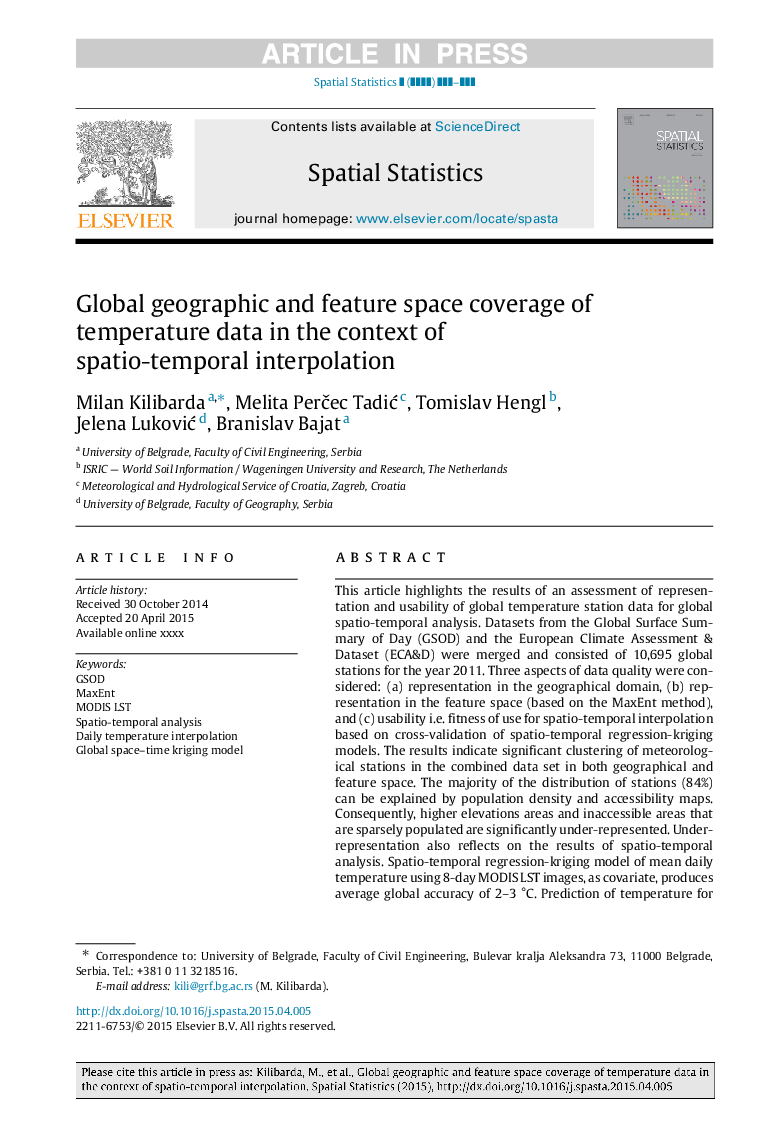| Article ID | Journal | Published Year | Pages | File Type |
|---|---|---|---|---|
| 10508470 | Spatial Statistics | 2015 | 17 Pages |
Abstract
This article highlights the results of an assessment of representation and usability of global temperature station data for global spatio-temporal analysis. Datasets from the Global Surface Summary of Day (GSOD) and the European Climate Assessment & Dataset (ECA&D) were merged and consisted of 10,695 global stations for the year 2011. Three aspects of data quality were considered: (a) representation in the geographical domain, (b) representation in the feature space (based on the MaxEnt method), and (c) usability i.e. fitness of use for spatio-temporal interpolation based on cross-validation of spatio-temporal regression-kriging models. The results indicate significant clustering of meteorological stations in the combined data set in both geographical and feature space. The majority of the distribution of stations (84%) can be explained by population density and accessibility maps. Consequently, higher elevations areas and inaccessible areas that are sparsely populated are significantly under-represented. Under-representation also reflects on the results of spatio-temporal analysis. Spatio-temporal regression-kriging model of mean daily temperature using 8-day MODIS LST images, as covariate, produces average global accuracy of 2-3 °C. Prediction of temperature for polar areas and mountains is 2 times lower than for areas densely covered with meteorological stations. Balanced spatio-temporal regression models that account for station clustering are suggested.
Related Topics
Physical Sciences and Engineering
Earth and Planetary Sciences
Earth and Planetary Sciences (General)
Authors
Milan Kilibarda, Melita PerÄec TadiÄ, Tomislav Hengl, Jelena LukoviÄ, Branislav Bajat,
